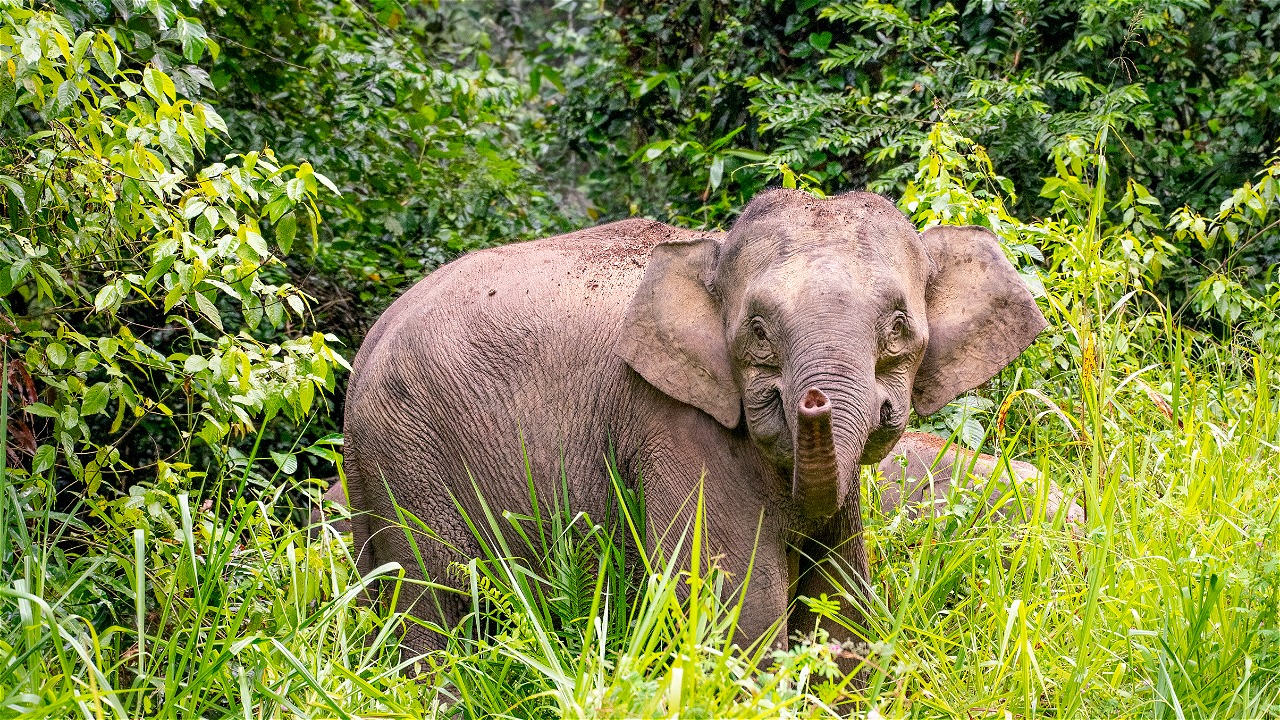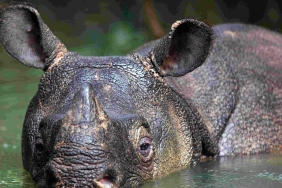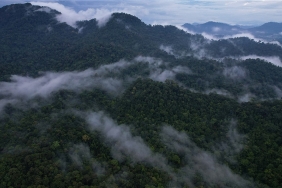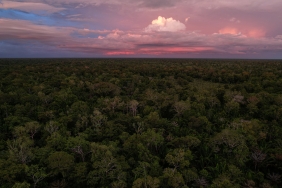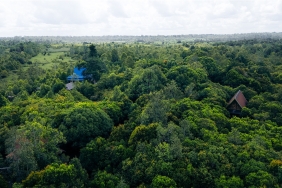HOW DIFFICULT IS IT TO PROTECT ELEPHANTS?
By: Wishnu Sukmantoro
Earth Day commemoration is over and within that week, there were several important events regarding the conservation of Sumatran and Bornean Elephants in Indonesia. First, the Asian Elephant Range State workshop was held at Sangrila Hotel Jakarta on April 18-20, 2017. Second, at the same time, elephant deaths were heard from Aceh, Jambi and Lampung. Third, at the same time, Jambi police and law enforcement officers of the Indonesian Ministry of Environment and Forestry (KLHK) arrested elephant tusks and the perpetrators in Jambi.
In the national strategy for Sumatran and Borneo Elephant conservation 2007 - 2017 and as a national priority target of the Ministry of Environment and Forestry, elephant conservation is targeted to achieve a 10% population increase from the previous figure. This population increase is a reference in the performance of the government and partners. On the way, the realization of population increase is very difficult to implement. Why is this? First, the methodology of collecting population data in the field is not standardized in many places, cost constraints in data collection and researcher capacity. Secondly, at least 4 biggest threats to the death of Sumatran and Bornean elephants are land conversion that degrades the quality of their habitat, human-elephant conflict, poaching and disease.
Third, the elephant conservation target is too domain in the government. Whereas the current distribution position of Sumatran elephants is not only in conservation areas, even 90% of their habitat is in company concessions or community-assisted in many places. Fourth, conservation efforts carried out are very limited to research activities, conflict mitigation and patrols that focus on a few places with limited funding or support.
From records from 2007 - 2017, the position of elephant deaths increased in trend in important population pockets, although there was a decrease in 2016 - 2017 such as in Riau Province. Of the 37 Sumatran elephant population pockets and 1 Bornean elephant population pocket (located in the Indonesian territory of North Kalimantan), the population pockets that can be maintained in the long term are less than 50%. These areas are Aceh (good forest habitat conditions although very vulnerable in terms of certainty of species and habitat protection), Bengkulu (Kerinci Seblat) and Lampung (Way Kambas National Park and Bukit Barisan Selatan).
Other pockets are of great concern, especially the certainty of survival despite the status of conservation areas such as the Balai Raja Wildlife Sanctuary and Tesso Nilo National Park (Riau Province). Some important alternative areas outside of conservation, namely Jambi Ecosystem Restoration, are still considered possible to become population pockets in the long term, while in the south of Bukit Tigapuluh, the Serangge - Pemayungan pocket, which once had great potential as a habitat pocket that was managed in the long term, has been destroyed by company concessions so that these two pockets are separated and give rise to inbreeding depression.
From a stakeholder perspective, population increase is also assisted by ex-situ elephants (those no longer living in their habitat), for example in Elephant Training Centers, in Zoos or in Safari Parks or in conflict mitigation units. The context of elephant population enhancement that includes ex-situ populations, although debated by ecologists, can play an alternative role in maintaining elephant populations. However, the record of deaths and births in ex-situ is still estimated to be balanced, meaning that the increase or decrease of ex-situ populations is still fluctuating. The government and conservation partners are already thinking ahead that these ex-situ efforts are also sought to encourage elephant births and through the rehabilitation process, elephants are then released into the wild, but the problem is habitat availability.
In the Asian Elephant Range State workshop attended by at least 13 countries that have Asian elephant populations, the issue of habitat conservation was the most important issue along with the development of action plans and legislation (encouraging the strengthening of regulations) at the country level. In the context of population management, strengthening habitat protection in conservation areas, managing fragmented habitats (in company concessions or community-owned areas), improving elephant-human conflict mitigation efforts and reducing ivory poaching rates are of utmost importance. In the context of human-elephant mitigation and anti-poaching response, strengthening elephant response teams that assist in elephant monitoring and elephant conflict mitigation is the top issue, followed by community awareness activities and development of integrated conflict mitigation guidelines which many countries lack.
For Indonesia, in addition to intensive protection of Sumatran elephants in conservation areas by strengthening intensive area patrol units, governance of small populations in fragmented habitats is a better way to increase the certainty of the survival of these populations in the medium to long term. The management of small populations that are fragmented and unconnected between elephant population meta-meta is done by habitat engineering, reintroduction of individual elephants, especially ensuring that male elephants are connected in small groups of female elephants so as to increase the chances of childbirth (this is being tested by a male elephant named Harris from Bukit Tigapuluh Jambi being introduced to a group of female elephants in Jambi Ecosystem Restoration).
Strengthening management and improving habitat quality in these small populations in enriching food, water and mineral habitats for elephant needs, engineering community governance by settling in clusters or groups including their garden huts so as to facilitate coordination between communities for joint conflict mitigation and encouraging companies to have patrol teams that monitor elephant movements with NGO partners to ensure there are no elephant deaths and strengthening concession guard posts to monitor the entry and exit of workers or communities and as an early warning of poachers coming to their concessions. This strategy of cooperation between the government, NGOs and companies has been piloted for almost two years in the Giam Siak Kecil and Tesso Nilo elephant enclaves (Riau Province).
In general, law enforcement for ivory poaching has increased in the last two years, especially in Jambi and Riau and this year also in North Kalimantan. A total of 4 - 5 ivory poaching and trade cases involving a total of 15 syndicate members have been successfully thwarted with court verdicts reaching 2 years 6 months (the maximum verdict according to the law is 5 years). An increase in law enforcement cases can have a deterrent effect, as a result the record in Riau and Jambi regarding the number of deaths due to poaching has decreased dramatically although there were still elephant arrests and deaths in Jambi in 2017. From the defendant's investigation, the ivory trade also involved a syndicate of Singaporean and Malaysian nationals.
The government, in this case the MoEF, local governments, NGO partners, companies and communities can take a role in the development of Elephant Intensive Management Zone (EIMZ) for the purpose of long-term management of elephants and their habitats. The first step is to identify locations that have certainty in the management of elephant populations in the long term even with minimal effort, if any, is that these identified locations need to build a definite and efficient action plan to ensure the protection of elephants with the development of a minimum essential force (MEF) such as strong patrol teams that are able to provide elephant protection at all times in their habitat, development of habitat development in areas that have been identified as having high value for elephant habitat, and community governance in early warning systems and conflict mitigation efforts.
EIMZ can also be done with area engineering, for example by building non-permanent artificial barriers (so that elephants are concentrated within the barrier location with a minimum area that must be studied and related to the large elephant range (between 300 - >1000 km2) if it is difficult to carry out strict elephant patrols and accompanied by habitat development within the target location.
Happy Earth Day 2017 and let's care for Indonesian Elephants.

